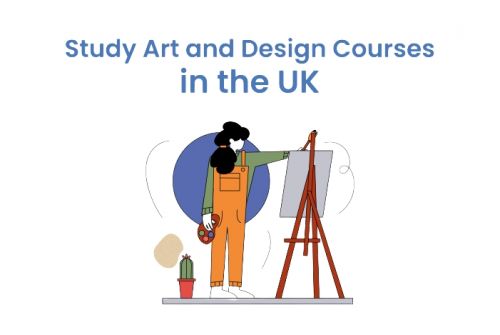
Study art and design courses in the UK

In today’s fast growing world, art and design courses give more than simply a creative outlet; they teach the skills and perspectives required to innovate across sectors, solve difficult problems, and effectively express ideas. From graphic design to fine arts and digital media, studying arts and design provides students several chances to make important contributions in industries such as entertainment, technology, advertising, education and more.
Whether you are an aspiring student or a professional looking to learn new skills, studying arts and design might lead to rewarding, influential careers. Here is all you need to know about art and design programs, including specialities, career pathways and why this course may be a great fit for you.
Art and design courses provide a unique opportunity to express oneself and bring creative thoughts to reality. For many students, having creative freedom is one of the most enjoyable elements of their education since it allows them to explore, develop, and polish their artistic expression.
In a time of abundant digital media and visual communication, art and design abilities are in great demand across a wide range of industries. Technical skills taught in art and design schools are applicable to a wide range of businesses, including branding and advertising, web design, and UX/UI development.
Design is really about addressing challenges visually and functionally. Art and design students learn how to approach problems from different perspectives, analyze critically, and prototype solutions; a mindset that can be used well beyond creative views.
People with creative skills frequently have a great degree of flexibility in their work arrangements, with opportunities ranging from freelance and remote employment to in-house jobs in a variety of sectors. Furthermore, many people in this sector are motivated by the sense of accomplishment that comes from seeing their ideas come to existence.
Art and design schools provide a variety of specialties to match student's individual abilities and professional goals. Some of the more popular areas are:
Illustration, creating art, and sculpture are all examples of traditional fine arts mediums. It focuses on technical proficiency, personal expression, and aesthetic inquiry, making it suitable for anyone who enjoys visual narrative and physical creation.
Graphic design focuses on visual communication, creating everything from logos and advertisements to infographics and websites. Graphic designers are essential in branding, marketing, and media, where they help shape how people interact with brands and products.
Fashion design combines creativity and utility, teaching students how to design, manufacture, and market apparel and accessories. Fashion design, with its emphasis on trends, fabric technology, and sustainability, provides a dynamic career path in a globally competitive business.
Interior designers specialize in the layout, aesthetics, and functionality of interior areas. Students learn how to integrate design and functionality, creating settings that satisfy customer's demands while also improving comfort and visual appeal.
For students interested in digital and interactive media, animation and multimedia courses include instruction in 2D/3D animation, visual effects, and digital storytelling. These abilities are extremely valuable in the entertainment sector, particularly in gaming, cinema, and advertising.
Industrial design combines aesthetics with engineering, aiming to create things that are not only visually beautiful but also useful and efficient. Product designers work on anything from domestic goods to technology, shaping the appearance and feel of daily matters.
If you acknowledge problem solving and want to create a long-term impact with your work, studying art and design might be the perfect fit for you. Art and design courses prepare students for a wide range of exciting, interesting, and significant careers. With the correct education and determination, you may transform your creative passion into an exciting and rewarding job that allows you to influence the environment around you.
Studying art and design in the UK provides students with a unique combination of cultural heritage, innovative thinking, and high-quality education. The United Kingdom provides a dynamic environment for developing artists and designers, with outstanding universities, lively creative industries, and a rich history in the arts. British art and design universities emphasize both classic and modern approaches, providing students with a solid basis for success in today's global employment market.
Beyond academia, the UK's vibrant art scene, which comprises outstanding museums, galleries, and design studios, offers limitless inspiration and networking possibilities. Furthermore, overseas students benefit from the UK's welcoming and varied communities, which promote collaboration and cultural interaction. If you want to pursue a worldwide career in art and design, studying in the UK might lead to interesting prospects, professional development, and creative fulfillment.
Embrace your potential, let your creativity grow, and discover the exciting opportunities that await you in the UK's art and design sector.